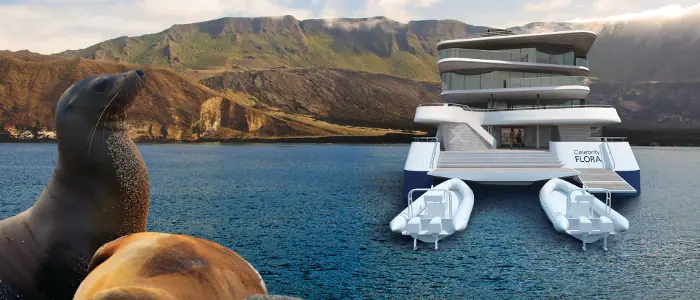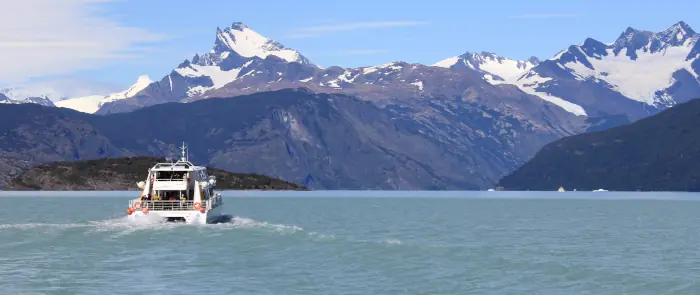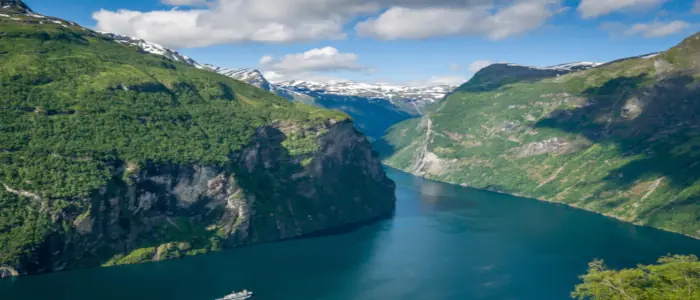Are Cruise Lines Becoming Greener?

Fans of cruising can often find themselves wondering, ‘what are cruise lines doing to help and contribute towards protecting the environment?’ There are in fact a number of initiatives to reduce waste and carbon emissions, including the use of solar panels as well as powering private islands with waste materials. Cruise companies have been making great strides in increasing sustainability and protecting the environment, and this will only increase in the future.

How Are Cruise Lines Protecting the Environment?
Many cruise lines have backed plans to protect the various environments on their itineraries in several ways. For example, there's now an alliance between Carnival Cruise Lines and the International SeaKeepers Society, which monitors water quality in locations visited by Carnival Triumph and Carnival Spirit. Equipment is has been built into these ships to gather data wherever they are. This is then relayed via satellite to scientists at the Rosenstiel School of Marine and Atmospheric Sciences at the University of Miami, where they can keep on top of the water quality levels.
However, this is merely one example of many systems in place for monitoring the environment's health. There are groups all around the world dedicated to tracking this kind of data, including the National Oceanographic and Atmospheric Administration, the National Science Foundation, the Office of Naval Research and the Southeast Atlantic Coastal Ocean Observing System.
What Changes Are Being Made to help the Environment?
One of the biggest and most common changes we’ve seen is to the hull on cruise ships. By painting the hull with silicon-based paint, the ships glide through water more efficiently, therefore saving fuel. Royal Caribbean Cruises have taken this a step further by designing aerodynamic hulls, increasing the benefit of this fuel-saving tactic.
Fuel is a key economic and environmental issue for cruise lines. Keeping the incredible ships afloat and operating at 100% takes a huge amount of energy. Today’s cruise ships can carry more 6,000 passengers and 2,000 crew members - which is the equivalent of a small town - but measures can be made to increase the efficiency of the fuel used.

Here are some examples of other positive changes:
- The US National Park Service has taken measures to reduce the environmental impact of cruising in Alaska, and there are strict regulations for the passage through Glacier Bay. Only one ship at a time is permitted to enter the bay and the number of total visits per season is also restricted.
- Holland America Line has partnered with the US National Park Service and the US National Oceanic and Atmospheric Administration to protect whales in the oceans. Together their programmes educate mariners about recognising when whales are in close proximity and how to avoid them.
- Royal Caribbean has invested $100 million into converting wastewater treatment systems into advanced purification systems, and also uses over 18 million gallons of biodiesel used each year, a much more sustainable, renewable alternative to diesel.
- Disney Cruise Line recycle the condensation from air conditioning units and use it for things such as laundry or cleaning decks, which saves gallons of water per day. They also recycle a mix of materials onboard; some of which is processed by their partners, Keep America Beautiful - an organization which is all about preserving the environment.
- Celebrity Cruises, have heat transfer windows that allow more light, which then reduces the cooling needed in the cabin.
- Norwegian Cruise Line have adopted a number of different strategies to protect the environment and increase sustainability. The cruise line uses eco-ballast technology which is a water treatment system ensuring the ship doesn’t send toxins into the water, and donates cooking oil to farmers in port cities to be re-used as fuel. Steps have also been taken to remove the use of plastic straws across the entire fleet and Norwegian Cruise Line’s two private islands. Excitingly, a partnership with Ocean Conservancy means that the cruise line is the first to join the Trash Free Seas Alliance, which is a huge step forward in the cruising industry. Finally, Norwegian Cruise Line’s campaign, Hope Starts Here, aims to rebuild schools and structures damaged by hurricanes in the Caribbean islands. In addition, Norwegian Cruise Line have funded the opening of a nature trail with Alaska Raptor Center, a dedicated avian hospital that rehabilitates injured birds of prey in Sitka, Alaska.

Overall, it’s clear that a number of popular cruise lines are investing in the environment in one way or another, and as science develops, this will surely only improve. If this information has struck a chord with you, find out more about how you can do your bit for the world and the communities in it, with our five holidays that make a difference.